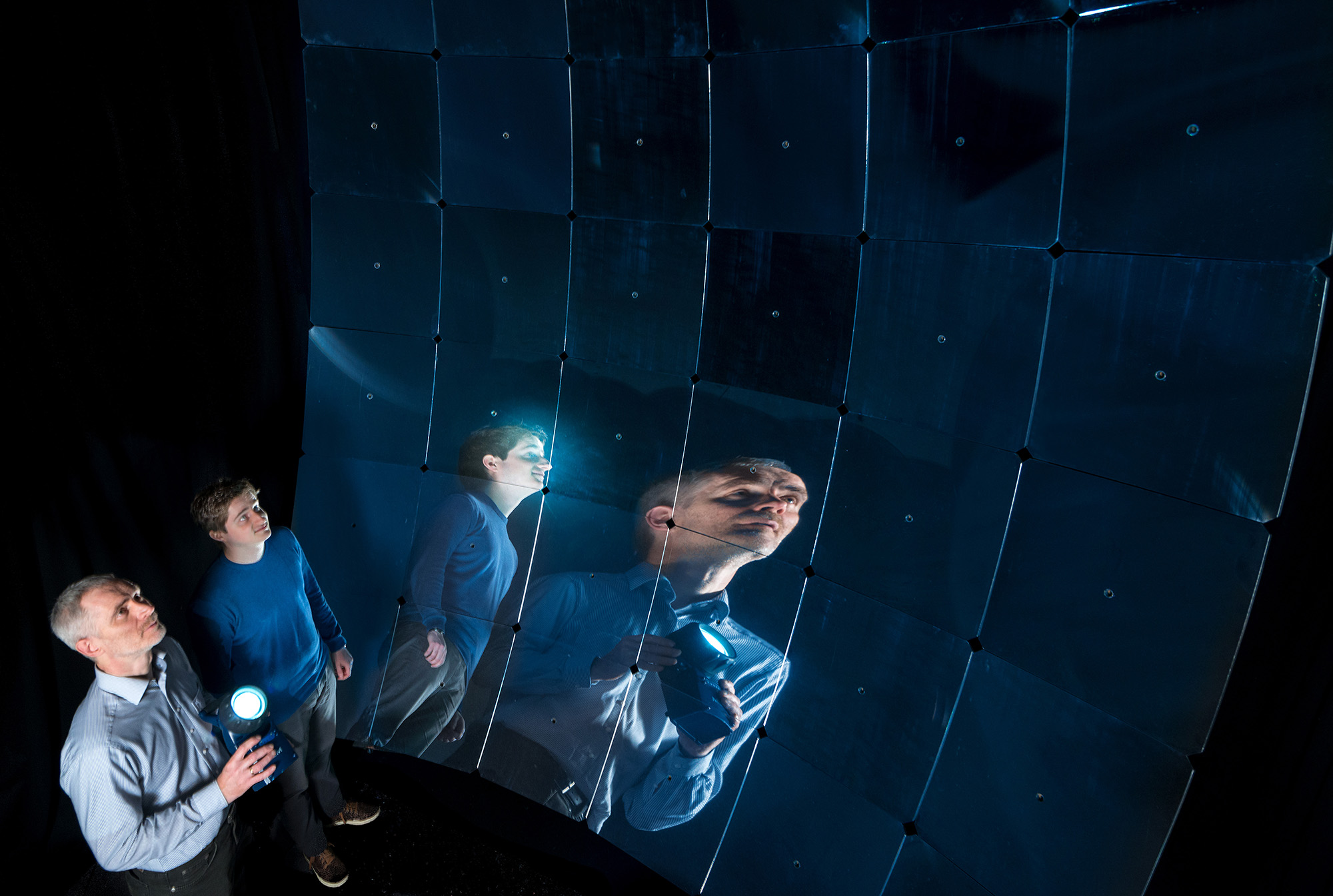Unveiling the Structure of the Universe
What do neutrinos, the so-called ghost particles, weigh? What emits the energy-richest particles of the universe? Black holes? Neutron stars? Active galactic nuclei? And how is the universe structured? Such questions are studied by scientists of the KIT Elementary Particle and Astroparticle Physics Center (KCETA). Here, experimental and theoretical research is conducted at the interface of astrophysics, elementary particle physics, and cosmology and the corresponding academic education is organized. This also includes large international collaboration in fundamental research. KATRIN, for example, weighs neutrinos, the most abundant massive particles of the universe. The Pierre Auger Observatory is searching for the highest-energy component of cosmic rays. KCETA, hence, is the only platform of this kind to study fundamental smallest building blocks of matter and their interactions as well as their significance and role in the development and evolution of the biggest structures of the universe. KCETA has a long tradition of collaboration, in particular within the Center of Excellence for Particle and Astroparticle Physics (CETA) and the biggest German graduate school.
Research Highlights
The KIT Elementary Particle and Astroparticle Physics Center (KCETA) is involved in many international large-scale experiments for physical fundamental research. In the Argentinian pampa, the Pierre Auger Observatory covering an area of 3000 square kilometers measures the highest-energy component of cosmic rays, i.e. elementary particles that come from the universe and hit the Earth and sometimes have incredibly high energies, millions more than particle accelerators on Earth. KCETA is also involved in the most powerful particle accelerators on Earth: At the Large Hadron Collider of CERN in Geneva, reactions that took place shortly after the Big Bang are simulated. Research of KCETA also focuses on neutrinos: With the most precise scales of the world, the KATRIN experiment on KIT’s Campus North, the rest mass of neutrinos is to be measured. And the IceCube Observatory at the South Pole measures neutrinos of highest energies from space.

